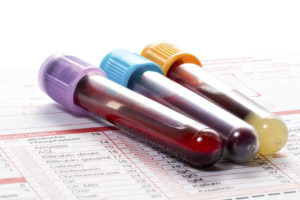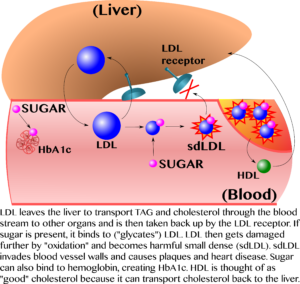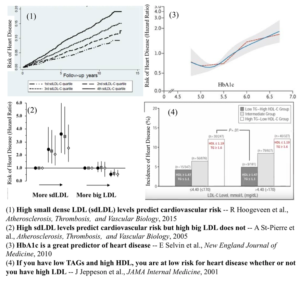
This piece was written in conjunction with two other pieces that reinforce its central thesis through either a Star Wars or Game of Thrones analogy. The links to these can be found here: LINK 1, LINK 2. Whether you read this more comprehensive piece first and then use the analogy pieces to reinforce the concept, or use either of the analogy pieces as a primer, the set are best taken together. Now, without further ado…
Like so much in nutrition science, the relationship between cholesterol and heart health is a poorly understood topic. It’s a topic that is oversimplified, often to the detriment of patients’ health. So, if you’re content to accept the generalization the LDL is “bad,” HDL is “good,” and that you should avoid food high in cholesterol, like eggs, shrimp, and meat, then feel free to stop here. However, if you want to understand for yourself some of the nuances in your lipid panel, then I encourage you to read on.
First question, what is cholesterol? Cholesterol is a biomolecule made primarily by our livers. Only about 15% of it comes from the foods we eat. Cholesterol is an important component of our cells’ membranes and is also needed to make hormones like testosterone, estrogen, progesterone, and even Vitamin D. Cholesterol is absolutely essential to life.
Why do people think that cholesterol is bad for heart health? The idea that cholesterol causes heart disease was popularized a man by the name of Ancel Keys who, in the 1950s, proposed the hypothesis that eating fats and cholesterol clogs your blood vessels. Although the data he provided were weak, Keys’ reputation dominoed this hypothesis into the popular psyche (for a fun aside, and if you like red meat, read more here: https://mdlingo.com/mooooving-forward-is-red-meat-really-bad-for-your-health/). Additionally, the fact that cholesterol is an ingredient of the plaques that clog arteries led some to incorrectly conclude that cholesterol is the cause of heart disease. As we will see in a moment, the story is not so simple.
So, what about LDL “bad” cholesterol versus HDL “good” cholesterol. Actually, LDL and HDL are not different types of cholesterol, rather they are different types of cholesterol “boats.” You see, cholesterol doesn’t like water, which means it can’t swim freely in the bloodstream. Therefore, your body needs to package cholesterol into boat-like carriers called Lipoprotein particles. LDL (which, for the sake of this article, also includes VLDL) stands for Low-Density Lipoprotein and HDL stands for High-Density Lipoprotein. Both LDL and HDL carry the same cholesterol. The only difference is that LDL carries cholesterol from your liver to your other organs, whereas HDL carries cholesterol out of your blood vessel walls back to your liver, and is therefore generally considered “good.”
It’s also important to recognize that the main function of LDL is not actually to transport cholesterol, but to transport triacylglycerides (TAGs), fats that your cells burn for energy! Dave Feldmen, whose lectures you can watch on YouTube, extends the boat analogy, introduced above. The boat is the Lipoprotein particle, the passengers are the TAGs, and the cholesterol is the life preservers. The life preservers are important, but the main objective of the boat is to transport the passengers (the TAGs) around in the bloodstream.
And now, dear passenger, we have arrived at the most important question, is LDL actually “bad” cholesterol? The short answer is, it depends on whether or not LDL has been turned to the dark side by sugar! LDL by itself is fine, good in fact. It’s goes about its business transporting TAGs and cholesterol to organs around the body for energy, cell membranes, and hormone synthesis. But when LDL mixes with too much sugar in the blood, the sugar becomes attached to the LDL in a process called “glycation.” This makes the LDL particle more vulnerable to a damaging process called “oxidation,” and it is this oxidized LDL that is dangerous to our health. Oxidized LDL is also called small dense LDL because glycation and oxidation make LDL smaller. From now on, I’m going to refer to oxidized LDL as small dense LDL because that’s how it’s usually referred to in medicine.

Anyways, the reason small dense LDL is bad is that this damaged form of LDL can’t be recognized by LDL receptors and taken back up by our livers. So where is the small dense (oxidized) LDL to go? Well, first it begins to accumulate in the blood (this leads to what’s known as a “high LDL particle count”), but eventually it invades the walls of our blood vessels, leading to the formation of a plaque. Not only is small dense LDL particularly good at getting into our blood vessel walls, but, once there, it is the only kind of LDL that is recognized by white blood cells. These white blood cells try to gobble up the small dense LDL and, in the process, turn into sickly “foam cells” that bunch up and clog our blood vessels!
So, to review, LDL transports fats and cholesterol to cells around the body. When LDL is exposed to too much sugar, it gets damaged (turned to the dark side) and becomes small dense LDL. Small dense LDL can’t be recognized by classical LDL receptors and taken back up by the liver, so it builds up in the blood and slips into our blood vessel walls. Here is it eaten by white blood cells that poof up into foam cells that clog our arteries.
Now that you’re a cholesterol expert, or on your way to becoming one, let’s talk about what you want on your blood tests, why you want it, and what you can do to improve your numbers. First, and foremost, you want low levels of small dense LDL! That should be your primary concern. However, often times small dense LDL isn’t directly measured, so there are some surrogate markers you can use instead. For example, a low LDL particle count suggests low small dense LDL because if LDL doesn’t get glycated and oxidized it can be taken back up by the liver and the particles don’t buildup in the blood. You also want a low HbA1c. Wait, what!?! HbA1c isn’t on a lipid panel. Doesn’t it have to do with diabetes? Yes, that’s true. HbA1c is a measure of glycated hemoglobin. In simple terms, it’s a marker of average blood sugar levels. And because sugar is what turns LDL to the dark side through glycation, it indirectly predicts you your small dense LDL levels. You also want low TAGs, the simplified explanation for this being that TAGs help LDL stick around in the blood and become small dense LDL. However, TAG levels are variable over the course of the day. And, since HDL levels are more stable and inversely related to TAGs, you also want high HDL. Actually, it’s even better if you examine the ratio of TAGs to HDL. A low TAG/HDL ratio is a great predictor of good heart health. (See the table below for target numbers, as well as some excellent illustrative graphs taken from various papers in the peer-reviewed literature.)

So that’s what you want, now how do you get it if you don’t already have it. Well, there are a lot a lot of things you can do, from getting good sleep, exercising regularly, and remaining properly nourished. But, in my opinion, the two biggest bang-for-your-buck dietary changes you may want to consider are (1) decreasing your carb intake, particularly processed sugars and grains, and (2) avoiding processed vegetable oils. Decreasing your carb intake is the most important because it will decrease your blood sugar and prevent the cascade of events that starts with LDL glycation and oxidation. And processed vegetable oils, despite the fact that they are falsely marketed as healthy, are enriched in highly reactive omega-6 fats that promote LDL oxidation. Therefore, I recommend avoiding soybean, canola, and corn oils and instead going for avocado, coconut, and olive oils.

Now, if you haven’t already, check out the fun Star Wars or Game of Thrones analogies for what you’ve just learned (linked above)! And, if you want to learn more about cholesterol from different voices, watch some of the awesome YouTube lectures below. I’ve marked my personal favorites with asterisks.
Dr. Paul Mason: *Blood tests on a ketogenic diet – what your cholesterol results mean: Link
Professor Ken Sikaris: *Making Sense of LDL: Link
Dave Feldman: It’s about Energy, Not Cholesterol: https://www.youtube.com/watch?v=y8pybQjVeiQ
*Interpreting Common Low Carb Lipid Profiles: https://www.youtube.com/watch?v=R0nS8yxQ90E
(If you still think LDL itself is dangerous and want to make $1,000, go to 17:45 in this lecture)
And, as always, PLEASE keep in mind that this information is an evidenced-based point of view on a complex medical topic that is meant to be empowering but is, in no way, intended to constitute personalized medical advice.
*The views and opinions expressed herein are those of the author and do not necessarily reflect the views of MDLingo.com, its affiliates, or its employees.